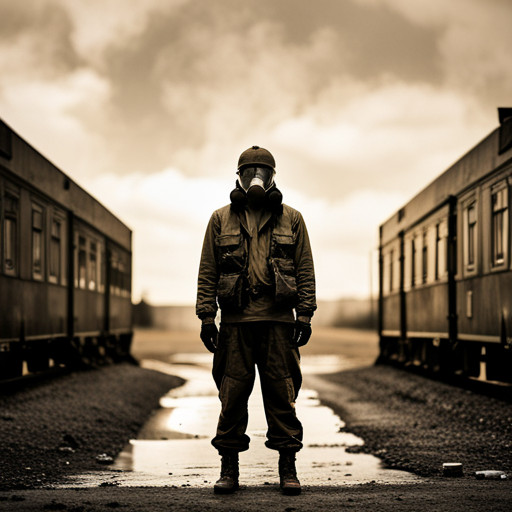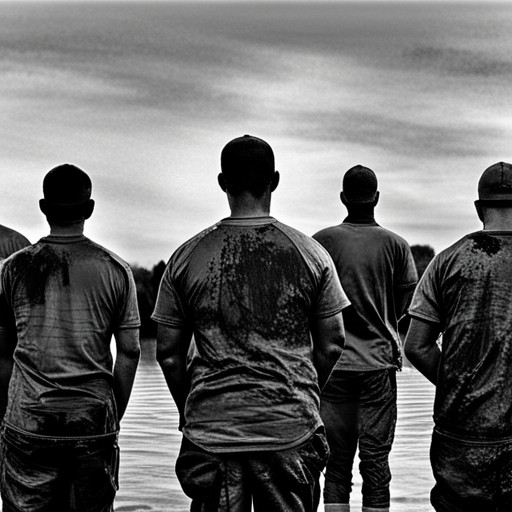Unmasking the Quiet Despair: Psycho-Social Impact of Camp Lejeune Water Contamination
This article explores the profound psycho-social consequences of water contamination at Camp Lejeune.

By elucidating the unseen struggles of affected individuals and investigating the social disruption within this community, the research sheds light on a silent crisis.
It also offers an analysis of personal experiences, providing a deeper understanding of the impact.
The piece concludes with strategies for coping and healing from such environmental trauma, offering hope amidst despair.
Key Takeaways
- Camp Lejeune water contamination has caused significant health hazards, including various forms of cancer, liver disease, and neurological disorders.
- Exposure to environmental crises like water contamination can lead to psychological consequences such as anxiety, depression, and post-traumatic stress disorder.
- The social ramifications of water contamination include distrust among residents, increased stress-related illnesses, and strained social relations within the community.
- Victims of water contamination have shown resilience by advocating for clean water policies, participating in research efforts, and pushing for stricter regulations on water quality.
The Unseen Struggles: Understanding Water Contamination at Camp Lejeune

The water contamination at Camp Lejeune presents a myriad of unseen struggles, encompassing health repercussions and psychological distress among affected populations. A comprehensive understanding of the Contamination Causes and consequent Health Hazards can shed light on the magnitude of these complexities.
For decades, volatile organic compounds (VOCs) including trichloroethylene, perchloroethylene, benzene and vinyl chloride were reported in the drinking water at this military base. The primary source was attributed to leaking underground storage tanks, industrial spills and inadequate disposal practices. These VOCs are known carcinogens and present multiple risks.
Health hazards associated with exposure to such contaminants include various forms of cancer like leukemia, breast cancer, bladder cancer as well as non-cancerous conditions such as liver disease and neurological disorders. Notably, children born to mothers exposed during pregnancy exhibited higher incidences of neural tube defects & childhood cancers.
Furthermore, the psychological impact on affected populations is significant yet often overlooked. Chronic illness combined with the knowledge of preventable exposure has led to mental health issues such as anxiety disorders & depression.
Impact on the Mind: Psychological Consequences of the Crisis

Exposure to environmental crises often leads to significant psychological consequences, manifest in various forms such as anxiety, depression and post-traumatic stress disorder. Such is the case with the Camp Lejeune water contamination incident. The uncertainty surrounding the impact of the contamination on individuals' health magnifies these mental health issues. Disease uncertainty has been linked to increased psychological distress, contributing to a heightened sense of vulnerability and a decreased sense of control over one's life.
Moreover, this situation is exacerbated by societal attitudes towards mental health. Mental Health Stigma remains pervasive in many communities, creating additional barriers for those needing support or treatment. This stigma can lead to self-isolation, avoidance of medical care, and an overall detriment to recovery efforts.
An analysis into the repercussions faced by residents exposed to contaminated water at Camp Lejeune reveals that several factors have compounded their psychological distress: first-ever exposure to toxicants; disease uncertainty; and societal stigma associated with mental health disorders. These factors intertwine in ways that exacerbate each other's adverse effects on individual's psyche.
Addressing these issues requires comprehensive strategies that encompass public education about environmental hazards, measures aimed at reducing disease uncertainty through transparent communication of risks and possible outcomes; social initiatives aiming at combating mental health stigma are also crucial for comprehensive intervention.
Disruption in Community: The Social Ramifications of Water Contamination

Incidences of environmental crises have far-reaching ramifications beyond individual health, affecting community structures, relationships, and overall social dynamics. The Camp Lejeune water contamination crisis is a prime example of such an event that led to significant social disintegration within the affected community.
Significant distrust arose among the residents due to inconsistent information regarding the severity and impact of the contamination. Lack of transparency from authorities fueled suspicion and doubt, weakening communal bonds and interpersonal relationships. This resulted in a pervasive sense of unease within the society, escalating into community distrust.
The perceived disregard for public well-being by those responsible for managing the crisis further aggravated feelings of betrayal within the community. This disillusionment with authority figures caused a ripple effect, eroding trust not only in local governance but also in broader societal institutions.
Moreover, this incident precipitated an increase in stress-related illnesses among residents—both physical and psychological—further straining social relations as individuals grappled with their health issues while navigating disrupted support networks. The contaminated water crisis thus served as a catalyst for profound societal change: it undermined social cohesion and led to enduring alterations in how community members interacted with each other and viewed their role within society.
Thus, understanding the impacts of environmental disasters extends beyond assessing physiological damage—it necessitates analyzing its socio-cultural repercussions too. Addressing these aspects requires empathy alongside analytical rigor; acknowledging this complex web woven by environmental crises is crucial in devising comprehensive solutions that promote sustainable recovery.
Stories From the Ground: Personal Experiences of the Victims

Narratives from affected individuals offer invaluable insights into the lived experiences during environmental crises, shedding light on their struggles and resilience. Within these stories, a common thread emerges: victims' resilience in the face of adversity following the water contamination at Camp Lejeune.
A deeper investigation into this subtopic reveals an intricate pattern of courage and determination that is evident in the aftermath of contamination. Despite physical ailments and psychological distress resulting from water pollution, these individuals exemplify strength by adapting to unprecedented circumstances, advocating for justice, and supporting fellow survivors.
The contamination aftermath has also led to increased awareness about environmental health risks among victims who have become advocates for clean water policies. They actively participate in public forums, contribute to research efforts aimed at understanding long-term effects of exposure to contaminated water, and lobby for stricter regulations on water quality standards.
Further analysis into this aspect demonstrates the dynamic interplay between human adaptability under crisis situations and socio-political activism arising from personal experience. The connection underscores how individual responses to adverse events can influence broader societal actions towards improved environmental governance.
One cannot ignore the profound psycho-social impact caused by such environmental disaster; however, it also unravels a remarkable capacity for resilience among humans when faced with adversity. By sharing their narratives, victims not only provide valuable perspective on surviving an environmental catastrophe but also inspire transformative action against similar future occurrences.
Moving Forward: Strategies for Coping and Healing From the Trauma

Strategies for coping and healing post-trauma are integral in the journey of individuals affected by environmental disasters, as they aim to rebuild their lives while grappling with lingering physical and psychological effects. Survivor resilience, a key factor in this process, cannot be understated. It embodies the capacity of an individual to withstand, adapt, and recover from adversity.
Therapeutic approaches play a pivotal role in fostering survivor resilience. Cognitive-behavioral therapy (CBT), for instance, has been found effective in reducing trauma-related distress by helping individuals modify patterns of thinking or behavior that lead to suffering. By focusing on the present and problem-solving approach rather than delving into past events, it fosters self-efficacy and optimism.
Another therapeutic approach involves group-based interventions where survivors share experiences and learn from one another's coping strategies. This creates social support networks that can buffer against feelings of isolation often associated with trauma victims.
Yet another method is exposure therapy which gradually exposes individuals to thoughts, feelings, and situations related to their traumatic experiences under controlled conditions leading to reduction in fear response over time.
Promoting self-care activities such as regular exercise, balanced diet intake or mindfulness techniques can also aid recovery by enhancing overall well-being and stress resistance capacities.
Lastly but importantly is the role played by societal structures. The creation of supportive environments through policies that ensure access to appropriate healthcare services or employment security significantly contributes towards survivor resilience.
Moving forward implies not only surviving but thriving after adversity - an ambition achievable through concerted efforts involving therapeutic approaches designed to bolster resilience amidst challenges.
Frequently Asked Questions
What Specific Contaminants Were Found in the Water at Camp Lejeune?
In the context of contamination sources at Camp Lejeune, volatile organic compounds such as trichloroethylene, perchloroethylene, benzene and vinyl chloride were detected. These findings have significant legal implications due to their detrimental health effects.
How Was the Water Contamination at Camp Lejeune First Discovered and by Whom?
The discovery of water contamination at Camp Lejeune was first uncovered by environmental engineers during routine testing. The disclosure timeline and potential 'contamination cover up' remains the subject of rigorous investigation and debate.
What Actions Did the Authorities Take Immediately After the Contamination Was Discovered?
Upon discovery of the contamination, authority accountability was enforced as immediate response actions were undertaken. These included swift water source closure and the initiation of extensive cleanup operations to mitigate further environmental and health risks.
Are There Any Long-Term Physical Health Effects Associated With Exposure to the Contaminated Water at Camp Lejeune?
Exposure to the contaminated water at Camp Lejeune has been linked to various long-term physical health effects. Contamination symptoms include cancers, birth defects, and other serious conditions related to toxic exposure response.
What Steps Are Being Taken to Prevent Future Instances of Water Contamination at Military Bases?
Policy improvements and infrastructure upgrades are being implemented to prevent future water contamination at military bases. These steps involve rigorous testing, improved filtration systems, and stricter environmental compliance for waste disposal practices.
Conclusion
The psycho-social implications of the Camp Lejeune water contamination crisis reveal profound impacts on individual and community wellbeing. This tragedy underscores the necessity of stringent environmental safeguards and responsive care strategies to mitigate such occurrences.
It is evident that fostering resilience, healing, and support in affected communities must be a priority. Ultimately, this incident serves as a poignant reminder of the lasting effects environmental disasters can have on human psychology and society.

This post has been generated by AI and was not reviewed by editors. This is Not legal advice. Please consult with an attorney.




